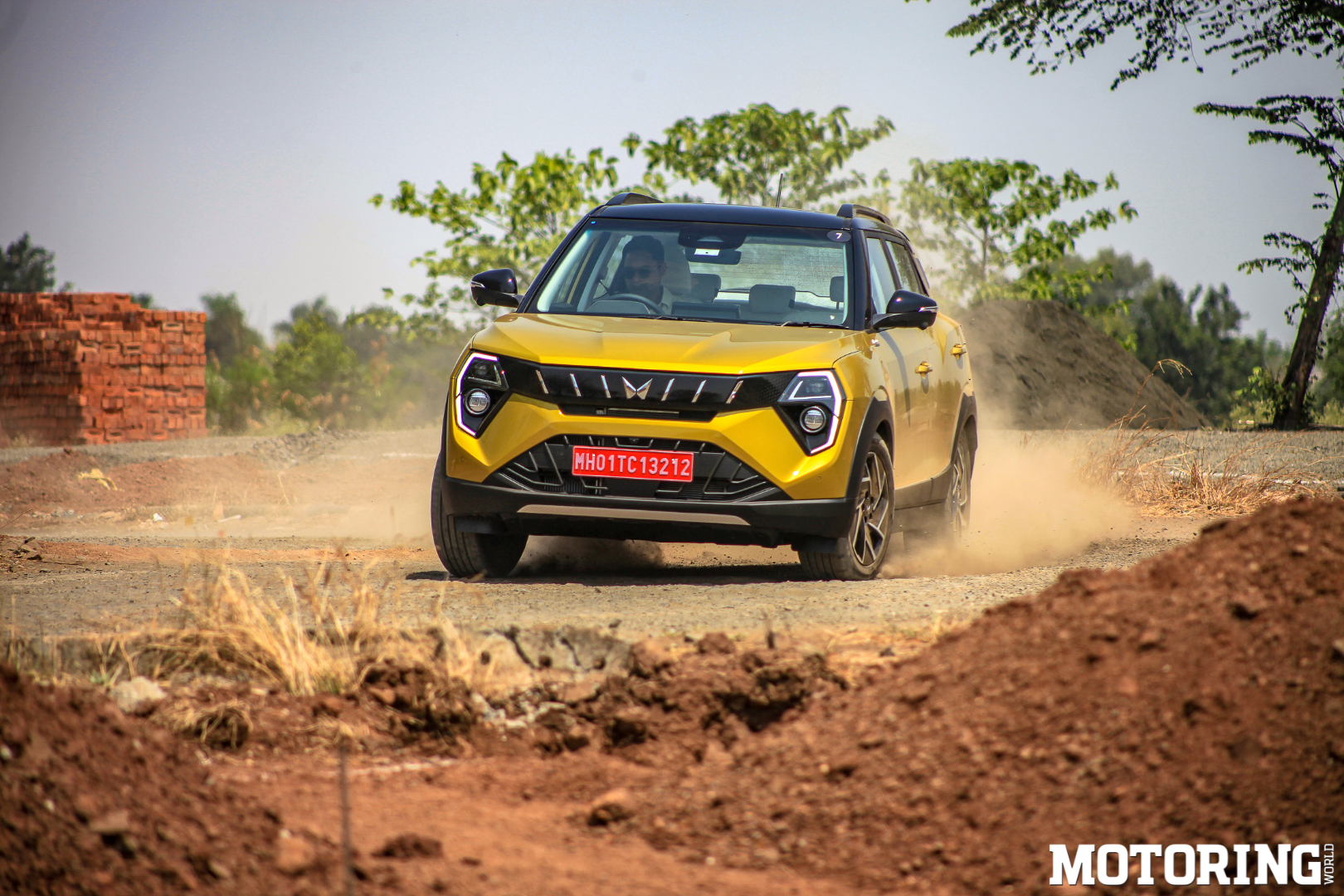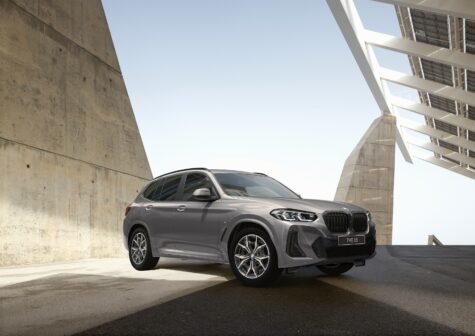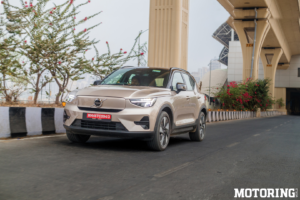The XUV 3OO – nee shortened Ssanyong Tivoli – has always been the most sorted vehicle in the Mahindra stable, in my opinion. It ticks a lot of boxes – dynamics, safety, features – comes with a bunch of pretty decent engine/transmission options and is a thoroughly pleasant car to drive. There’s nothing truly exhilerating about it, but then no car in this segment can claim to be so. The buying public appears to agree with me, having voted for it with their wallets to the tune of around 2.5 lakh units sold since its launch in February 2019, with demand remaining strong. Any manufacturer would be happy with these numbers, but when they realise that the Maruti Suzuki Brezza consistently shifts three times the XUV 300’s average monthly sales figures (with more than 10 lakh units sold in total since launch), they know that there’s a lot more they can try and do. In Mahindra’s case, that ‘lot more’ is the updated XUV 3XO, so let me hold forth about it without further ado.
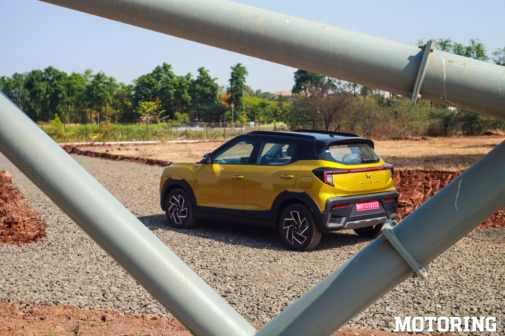
Despite being a (comprehensive) update, the 3XO looks all-new in the design department – I’ll give it that much. The older car had a pleasing front end and a curiously muddled posterior – and the 3XO is the exact opposite. It’s not often that a car looks best from the rear three-quarters, but that’s the case here. The most prominent design feature on its rump is the unmissable connected-strip LED tail light cluster, which seems to be all the rage with designers these days; equally prominent is the XUV 3XO badging on the boot. The tail lights are C-shaped and extend to the car’s C-pillars and there are inverted Cs below the lights on the bumper, to add some cohesion; various bits of sculpting and creasing provide additional elements, and on the bumper there are diamond-shaped patterns and a faux skid plate, too. The rear windshield’s bottom sections flow upwards onto the C-pillars and integrate into the bottoms of the rear windows, which is a nice touch. A roof spoiler with an integrated brake light rounds things off: it’s all quite busy, but it comes together well, and the wider rear gives it better presence.
The car’s profile remains relatively unchanged, save for a few sections. Pride of place is taken by the new 17-inch alloys wheels, which instantly give the profile more heft by filling out the wheel arches; kudos to Mahindra for going down this route. The black cladding above the wheel arches now has slightly strange cut-outs right in the middle, which breaks their flow, if you ask me. The new head and tail lights alter the car’s sides in their individual ways; positively in the case of the tail lights and negatively with the head lights (more on that in a bit). The other sections – the creases above the wheel arches, the roof line, the waist line – haven’t changed, but I’d say that everything falls into the net positive zone overall.
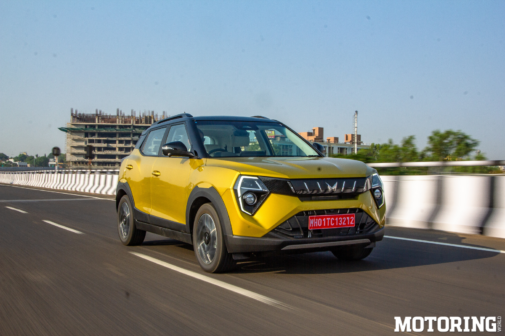
That front end, however. Mine may well be a minority opinion, but the XUV300 had a cleaner look to it; the 3XO’s wider face looks a bit bee-stung, and the way the C-shaped LED head lights curve downwards into the crease connecting to the fender give the front end a somewhat droopy character, in contrast to the previous model’s bright-eyed cheerfulness. The grille is now a bit thicker, with sleek chrome strips incorporated, and the fog lamps are directly under the head lights, rather than lower down the fender. It’s one of those mother’s love faces, to be honest, but the distinct resemblance to the XUV 7OO’s visage may not be a bad thing in the eyes of prospective buyers. Overall, the 3XO does look more hefty, and to be fair to it, most of the new design elements work in its favour.
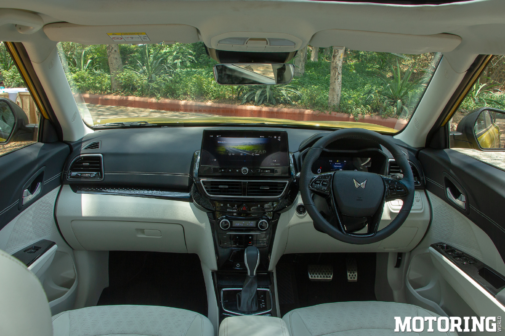
As far as the cabin goes, the 3XO is a step up from the XUV300, in almost all respects; however, keep in mind that I’m using the loaded-to-the-gills AX7 L variant as my point of reference here, since that’s the one I was handed the key to during the media drive in Nashik. The use of light grey fabrics and plastic for the seats, lower half of the dashboard and roof liner give the cabin a light, airy feel, with the downside being that keeping it clean will be a bit of a task; there were smudges visible after my 4-hour drive. There’s soft-touch leatherette on the top half of the dashboard and doors, which gives a nice contrast, and fit/finish are of a respectable standard. The instruments are now all-digital, and the touchscreen infotainment system has become a floating unit, rather the older car’s dashboard-embedded unit; the new one is an improvement in that it gets all the features from the XUV700, but I prefer screens that are integrated into the dashboard. The steering wheel looks and feels roughly the same, and has various controls on it; no complaints there. In terms of space and comfort, there are no issues either – with 1729mm of occupant space, there’s plenty of wiggle room up front and at the rear, and the seats are well-made and quite plush; the view from the driver’s seat is excellent, too.
This top-spec 3XO is absolutely overflowing with features. There’s a Harman Kardon audio system, which is quite good, and the infotainment system gets the XUV700‘s Adrenox features, something like 80 of them; how many of them you’ll actually use is debatable, and like in the 700, the system isn’t the most intuitive to use. Other prominent bells and whistles include a panoramic sunroof, wireless smartphone charging, wireless Android Auto and Apple Carplay, Alexa compatibility, a 360-degree surround-view camera, a cooled glovebox, dual-zone climate control, 65W fast USB C charging at the back (you can charge a laptop with it), an electronic parking brake with auto hold, rear A/C vents and several more; suffice to say that only the very picky will feel short-changed with this variant.
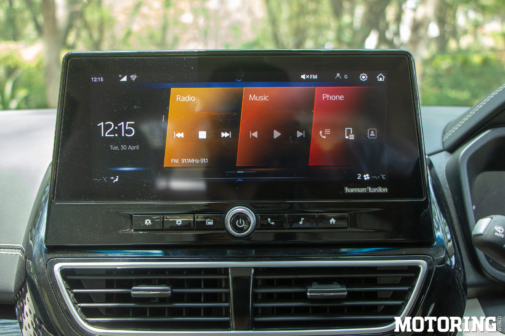
There are, however, some issues to report. The glossy black material used around the gear lever, A/C controls and touchscreen are dust and fingerprint magnets, and I wish OEMs would stop using the stuff. They’re so shiny that in bright sunlight, it’s difficult to read what’s printed on the buttons below the A/C dials – plus the fonts are so small that it’s tough to read them anyway. Additionally, I found that parts of the glossy surface next to the gear lever were peeling off, as were large sections of the grey material on the buttons for the parking sensors, start/stop and hill descent control. I hope these were issues only with my car, since buyers are not likely to take very kindly to cars that come with some wear-and-tear built in. Oh, and the button below the boot door to release it is a bit hard to find; boot space, at 364 litres, is decent for the segment. And one last bit – the default volume for the indicator sounds, seatbelt warnings and other audio cues is so high that if they happen to go off together, the cabin sounds like a video game parlour.
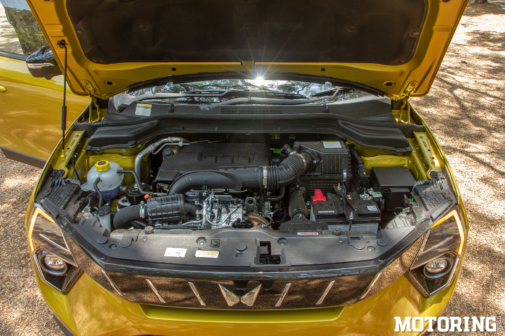
Under the 3XO’s hood are the same engine choices as in the earlier car – a 1.2-litre mStallion TCMPFi petrol, a 1.2-litre mStallion TGDi petrol and a 1.5-litre turbodiesel, making 110 bhp, 128.7 bhp and 115 bhp respectively. A 3rd-gen AISIN 6-speed automatic transmission has been offered with the petrol variants, and the car I had on test was the one with the TGDi engine and this transmission. Alongside the 128.7 bhp, this engine makes 23.4 kgm of torque, which makes it a pretty spirited performer – acceleration is strong through the rev range all the way to high triple digit speeds, and cruising at those speeds on the highway is a cinch. The auto ‘box is a little slow off the line, however, and the engine also takes a couple of seconds to pull up its socks and begin sprinting, so if the quickest starts are what you’re after, opt for the 6-speed manual transmission; for most urban conditions, it’s more than sufficient, and Mahindra claims a fuel efficiency of 18 kpl with this combo. Refinement on both engine and gearbox fronts is well within acceptable levels even under hard acceleration, and whatever little of the gruff engine note that you can hear is quite enjoyable ; at city speeds, the cabin is pleasingly quiet.
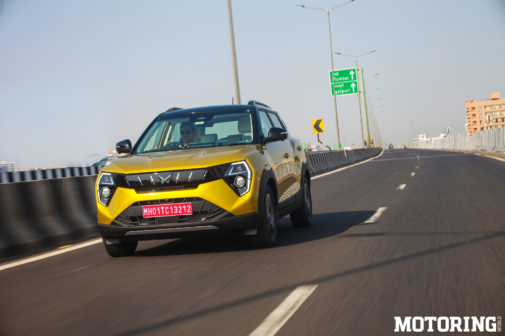
The previous car suffered a bit from a certain skittishness in its ride quality and softness in its handling characteristics, and I daresay not much has changed in the 3XO. I found that even on relatively smooth roads, I could feel small bumps and thuds under me, and my photographer certainly felt them in the rear seat. On the other hand, when I intentionally gunned the car through a series of bigger breaks in the road, it soaked up all of those very well, making the 3XO a surprising candidate for a bit of semi off-road antics; its excellent ground clearance, approach/departure angles and water wading depth also contribute, in this regard. The steering wheel weighs up well at speed, and doesn’t feel overly light in city conditions; under hard cornering, there’s a little bit of body roll and understeer evident, but on the plus side, the disc brakes front and rear do a great job of bringing the 3XO to a quick halt. In the safety department, this car really shines, with segment-first level 2 ADAS, 6 airbags as standard on all variants, ABS with EBD, traction control, hill-descent control and a 5-star GNCAP crash test rating (for the previous model, at any rate). I’m not one to go out and see if all the ADAS features in a car work as intended, so I’ll just take Mahindra’s word for it.
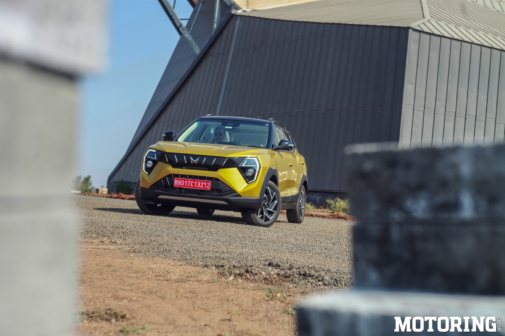
In every respect, then, the 3XO is a significant improvement over its predecessor, and the kicker is its price. Beginning at Rs 7.49 lakh and going up to Rs 15.49 lakh, ex-showroom, it’s absolutely stonking value for money, given Mahindra’s kitchen-sink approach to the entire line-up; indeed, it’s better equipped than some variants of cars one segment above it. It was always a very competent machine that’s now been made even better; I’d be happy to recommend it to anyone based on its safety features alone. It’s not quite the world-beater that Mahindra says it is (yet), but it certainly deserves to grab a larger slice of the segment from now. Let the games begin!
AUTODATA
Mahindra XUV 3XO mStallion TGDiPOWERTRAIN
Displacement:
Max Power:
Max Torque:
Transmission:
1197cc, I3, turbo-petrol
129 bhp
25.49 kgm
6-speed AT
TYRES
F/R: 215/55 R17
DIMENSIONS
L/W/H (mm):
Wheelbase:
Ground Clearance:
Kerb Weight:
Fuel Capacity:
3990/1821/1627
2600 mm
201 mm
1783 kg
42 litres
PRICE
Rs 7.49 lakh to Rs 15.49 lakh (ex-showroom, India)





